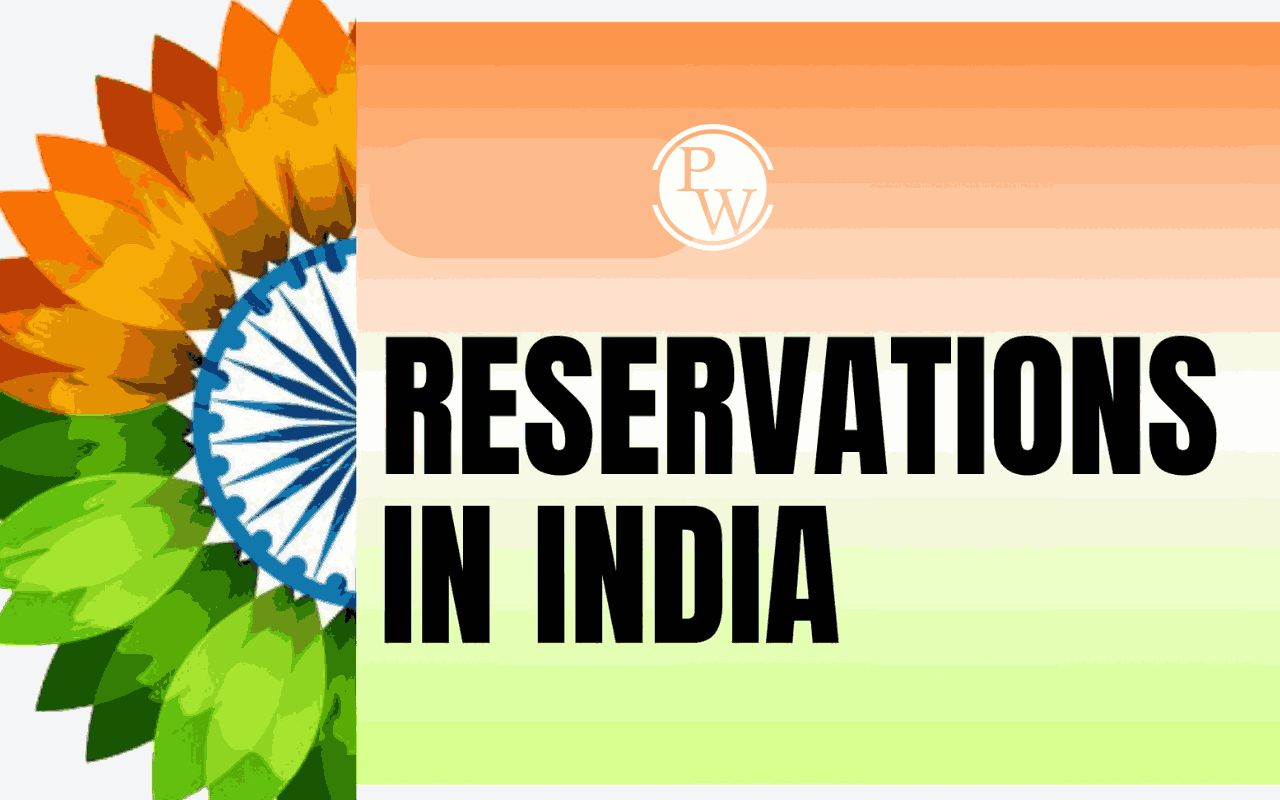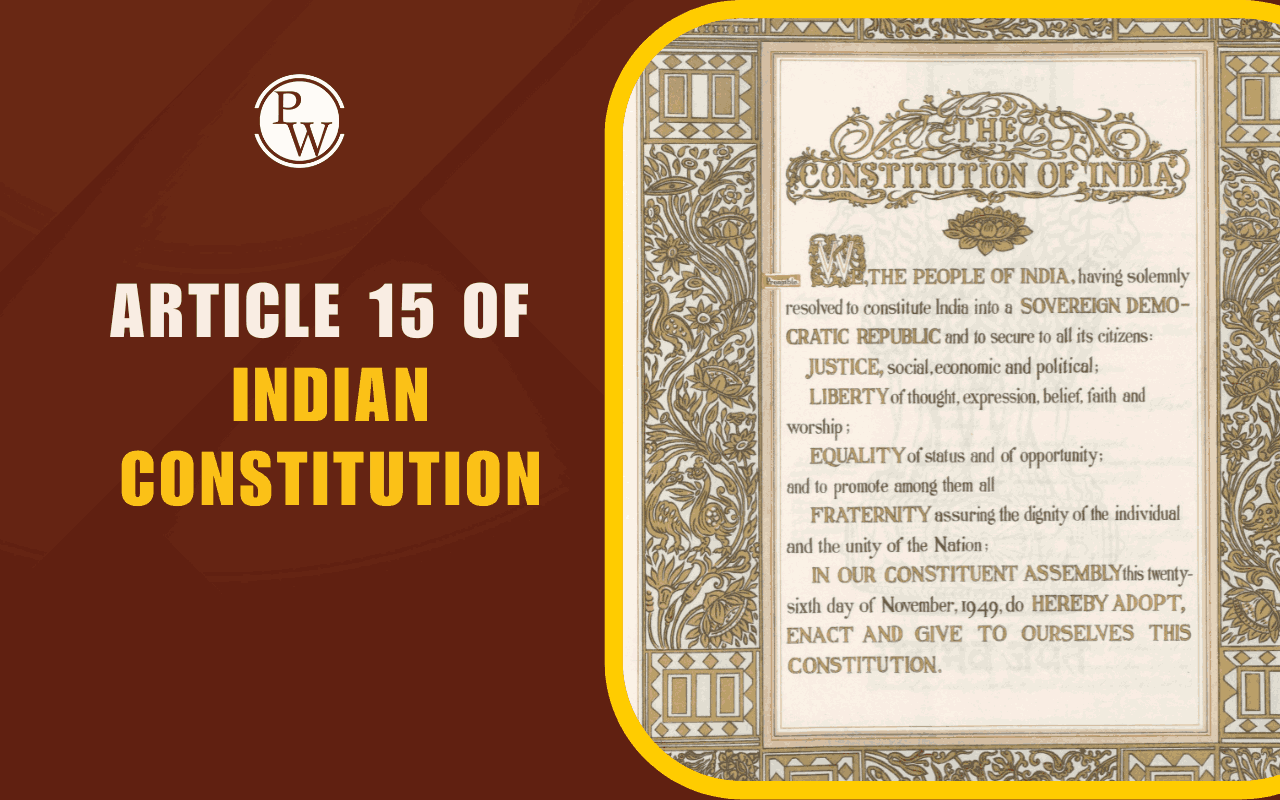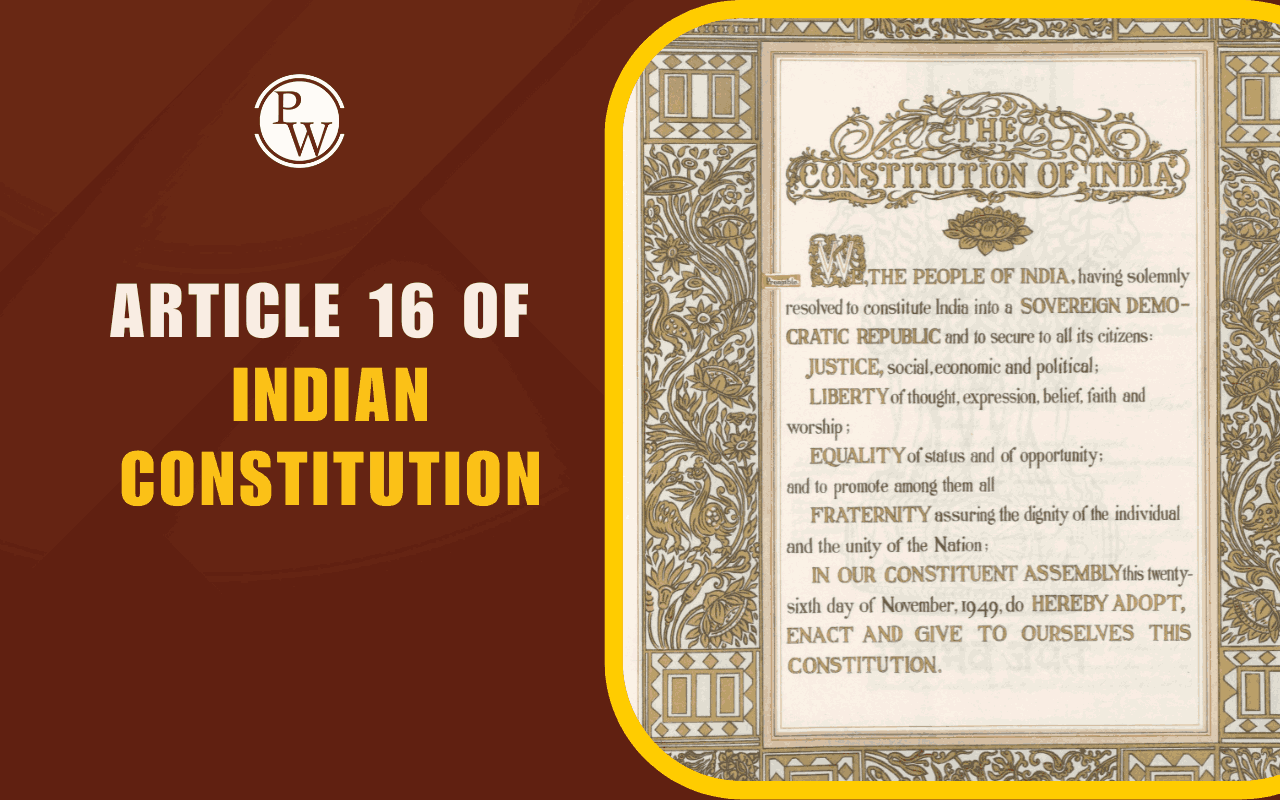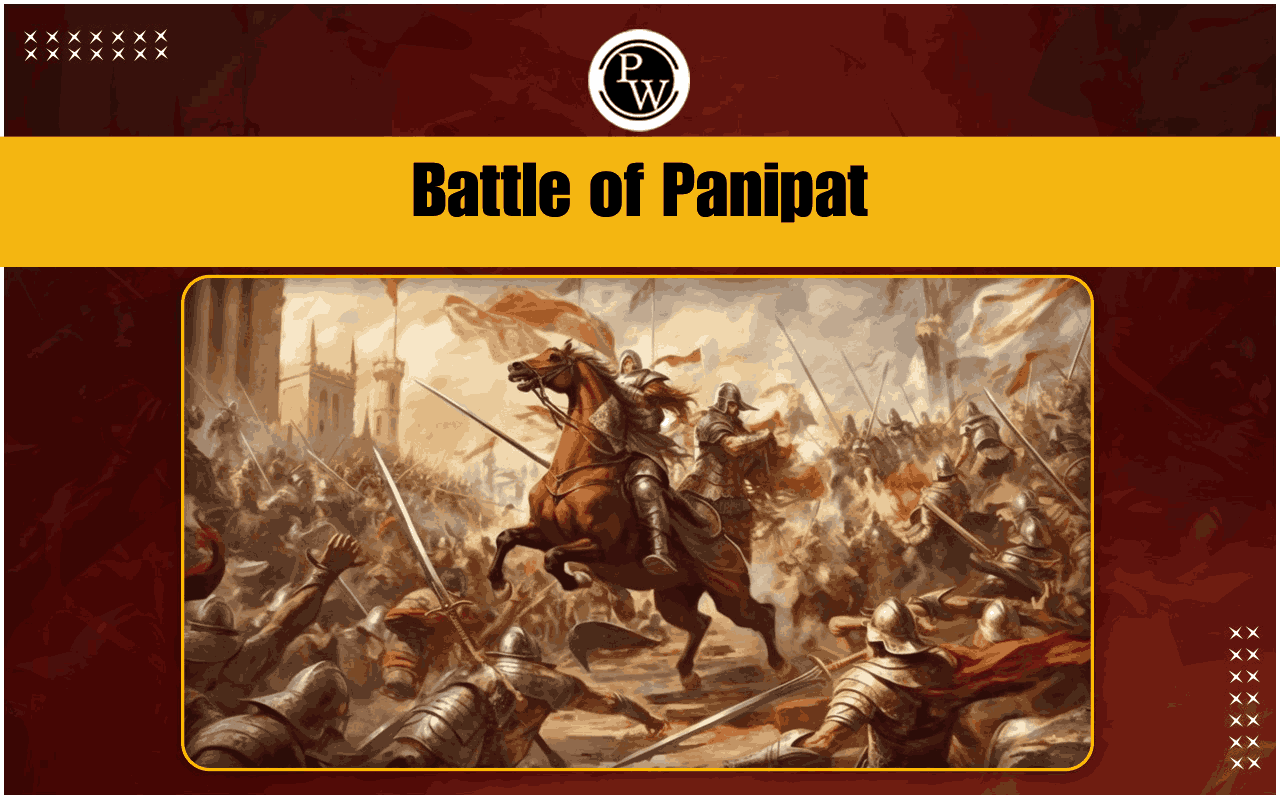
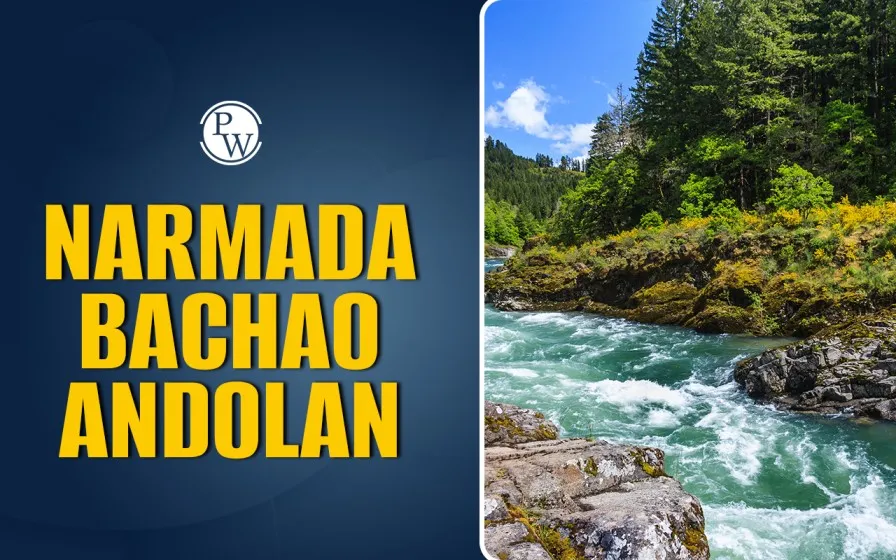
Narmada Bachao Andolan is a powerful people’s movement in India that began in the 1980s. It emerged to protect the rights of thousands of tribal communities, farmers, labourers, and others living along the Narmada River. These people faced displacement due to the construction of large dams, especially the Sardar Sarovar Dam.
Narmada Bachao Andolan brought attention to environmental issues, human rights, and ethical development practices by uniting people across states like Madhya Pradesh, Maharashtra, and Gujarat to save the mighty river. Keep reading to learn more about the Narmada Bachao movement.
Narmada Bachao Andolan (NBA)
The Narmada Bachao Andolan began in the 1980s and became a symbol of resistance against forced displacement. It is also one of the most well-known environmental movements in India. The movement gained national and global attention for its peaceful protests and deep concern for the environment, people’s rights, and social justice.
| Narmada Bachao Andolan (NBA) | |
| Also Known As | "Save the Narmada Movement" |
| Start Year | 1985 |
| Primary Leaders | Medha Patkar, Baba Amte |
| Other Key Figures | Bhagvati Patidar, Sudam Sawanth, Mahesh Verma, Sanjeev Khode, Rajkumar Singh |
| Location | Narmada Valley (states of Madhya Pradesh, Maharashtra, Gujarat) |
| Main Issue | Opposition to large dam projects (notably Sardar Sarovar Dam) on the Narmada River due to mass displacement, loss of livelihood, and environmental damage |
| Major Activities |
|
| Slogans | "Vikas Chahiye, Vinash Nahin" (We want development, not destruction), "Koi nahi hatega, bandh nahi banega" (No one will move, the dam will not be built) |
| Achievements |
|
| Recognition | Right Livelihood Award for nonviolent struggle and justice |
| Website | https://narmadaandolan.org/ |
Also Read: Important Days in May 2025
History of Narmada Bachao Andolan
The Narmada Bachao Andolan started when construction plans for the Sardar Sarovar Dam gained speed in the 1980s. However, the roots of the issue go back to the 1960s. The dam was first proposed in Navagam, Gujarat, in 1961.
But by the 1970s and 1980s, it became clear that this project would displace thousands. Most of the submergence would affect villages in Madhya Pradesh and Maharashtra. In response, local people started forming small resistance groups. These later joined hands to create the Narmada Bachao Andolan in the mid-1980s.
This was the beginning of a long, peaceful, and determined fight for justice that would continue even today.
| Year | Event |
| 1961 | Sardar Sarovar Dam project proposed |
| 1969 | Narmada Water Disputes Tribunal (NWDT) established |
| 1979 | NWDT issues award on water sharing and dam construction |
| 1985 | NBA begins as a protest movement; Medha Patkar emerges as a key leader |
| 1989 | NBA formally established; gains national attention |
| 1993 | World Bank withdraws funding after the Morse Commission's critical report |
| 1994–1999 | Dam construction halted due to public and legal pressure |
| 2000 | Supreme Court allows conditional continuation of the project with strict R&R guidelines |
| 2017 | Sardar Sarovar Dam was completed and inaugurated |
Purpose of Narmada Bachao Andolan
The primary purpose of the Narmada Bachao Andolan was to stop the forced displacement of people without proper rehabilitation. The people affected were mostly tribals, farmers, artisans, and fishermen. Their entire lives depended on the land, forest, and river. Here are the main goals of the movement:
-
To stop the construction of dams that cause mass displacement.
-
To demand fair rehabilitation and compensation for the affected people.
-
To ensure that development projects respect the environment and local communities.
-
To raise awareness about the harmful effects of big dams.
-
To protect the natural ecosystem of the Narmada Valley.
The Narmada Bachao Andolan also stood against the role of global financial institutions like the World Bank, which funded the project without ensuring proper safeguards.
Leaders of Narmada Bachao Andolan
The Narmada Bachao Andolan was not started by one person alone. It was a collective effort. However, some names became synonymous with the movement due to their leadership and courage. Key leaders of the NBA were:
Medha Patkar
Medha Patkar is a prominent social activist and the leading face of the Narmada Bachao Andolan. She was born on December 1, 1954, in Bombay and completed a master’s degree in social work from TISS. She left her academic career to work with the people of the Narmada Valley. Her efforts brought international attention to the issue.
Baba Amte
Baba Amte was a respected social reformer and humanitarian who played a key supporting role in the Narmada Bachao Andolan. Though best known for his work with leprosy patients and marginalized communities, he joined the NBA in the 1990s, lending moral strength and national visibility to the movement. At the age of 75, he shifted to the Narmada valley and lived among the displaced to protest the dam projects, calling attention to the environmental and human costs involved.
Credit: narmadaandolan.org
Apart from them, several local organisations like Narmada Dharangrast Samiti (Maharashtra), Narmada Ghati Navnirman Samiti (Madhya Pradesh), and Narmada Asargrast Samiti (Gujarat) played a crucial role by holding fasts, marches, rallies, and Jal Satyagrahas (water protests) to draw attention to their cause.
Narmada Bachao Andolan vs Union of India 2020
The Narmada Bachao Andolan vs Union of India 2020 case was a significant legal battle. It showed the ongoing nature of the movement even after decades. Despite past court orders, many affected families had not received proper rehabilitation. In 2020, the Andolan filed a petition in the Supreme Court of India.
|
Petitioners' Arguments |
|
|
Respondents' Arguments |
|
|
Supreme Court Findings |
|
Therefore, while the court did not fully stop the dam’s progress, it forced the authorities to review their rehabilitation efforts. The case showed that the Narmada Bachao Andolan was still relevant and still fighting for justice.
Impact of Narmada Bachao Andolan
The Narmada Bachao Andolan had a massive impact on Indian society, law, and environmental policies. Though the dams were not stopped completely, the movement achieved many important things.
Social Impact:
-
It brought the issue of displacement into the national spotlight.
-
It empowered local communities to speak up.
-
It created awareness about the cost of development projects.
Legal and Policy Impact:
-
The Supreme Court put a stay on the dam in the late 1990s.
-
It led to the creation of improved rehabilitation policies.
-
The World Bank withdrew its funding due to international pressure.
Environmental Impact:
-
The movement forced authorities to conduct environmental studies.
-
It promoted the idea of sustainable and people-friendly development.
-
It showed how mega-projects can harm rivers, forests, and biodiversity.
The Narmada Bachao Andolan also inspired many other movements across India and abroad. It proved that peaceful protest, when backed by truth and mass support, can challenge even the biggest systems.
Want to understand more such topics in the environment? Explore PW’s UPSC Courses today to deepen your knowledge and prepare smarter for the exam!
Narmada Bachao Andolan FAQs
What is the Narmada Bachao Andolan?
Who started the Narmada Bachao Andolan?
What was the main aim of Narmada Bachao Andolan?
Which states were involved in the NBA?
What impact did the NBA have on India?

UPSC Coaching






